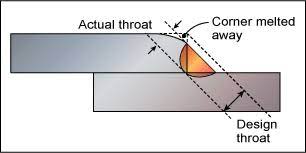Kozzybear
Civil/Environmental
- Jun 9, 2014
- 16
I am attempting to design a base plate connection for a HSS 3.5"x3.5"x3/16" Column. It is a cantilevered awning that is creating a rather large moment about the base. I calc'd that I would need a 3/8" fillet weld around the member to resist the moment, but the 3/16" thickness of the HSS column limits this.
Because of this limitation I am thinking of adding stiffeners to that connect the HSS member to the Base Plate, but do not know how to go about calculating out the strength of the stiffener and having trouble finding resources that describe this process.
My best guess would involve treating the stiffener plate as a triangle and making it resist the moment a length 1/3 of the way up (so if it is a 3"x3" right triangle, apply the force at 1"). Then to use the area at the midpoint of the hypotenuse (essentially 0.707x3"x Thickness of stiffener) and treat it as though its in compression. Will this give an accurate answer or am I thinking about this the wrong way?
Any help is appreciated!
Because of this limitation I am thinking of adding stiffeners to that connect the HSS member to the Base Plate, but do not know how to go about calculating out the strength of the stiffener and having trouble finding resources that describe this process.
My best guess would involve treating the stiffener plate as a triangle and making it resist the moment a length 1/3 of the way up (so if it is a 3"x3" right triangle, apply the force at 1"). Then to use the area at the midpoint of the hypotenuse (essentially 0.707x3"x Thickness of stiffener) and treat it as though its in compression. Will this give an accurate answer or am I thinking about this the wrong way?
Any help is appreciated!

